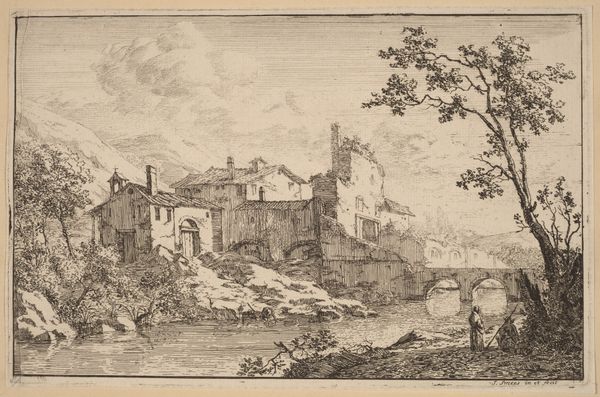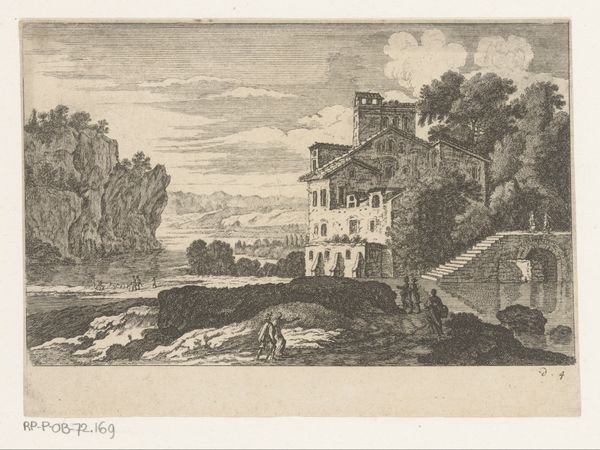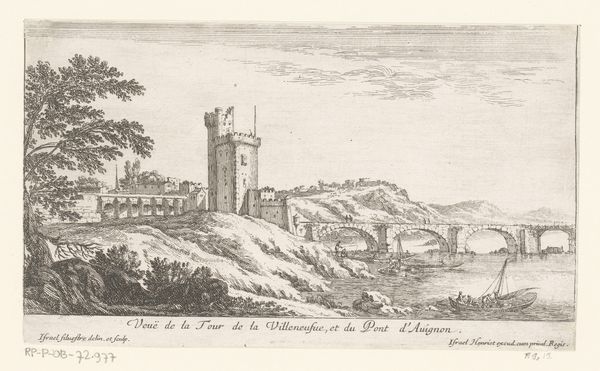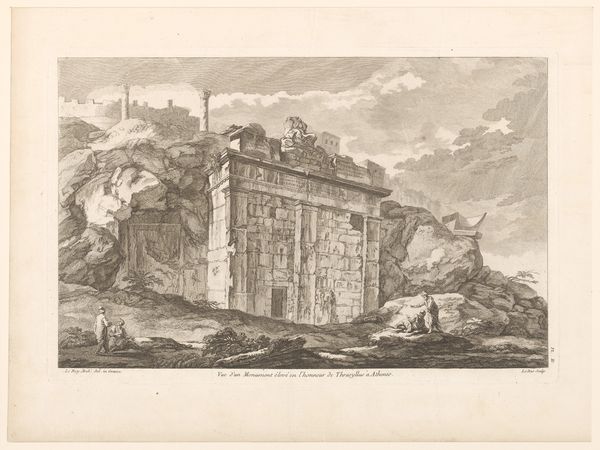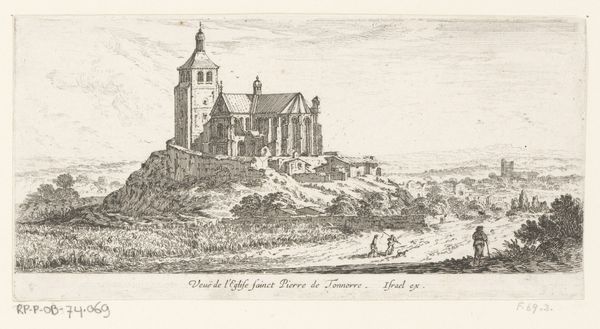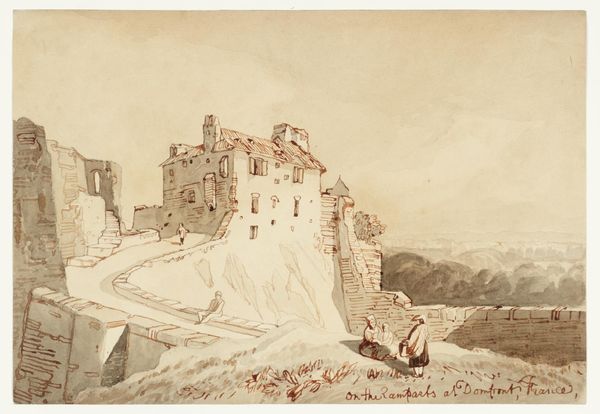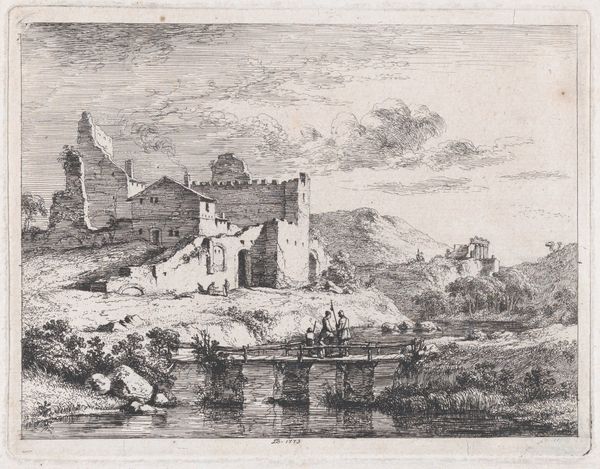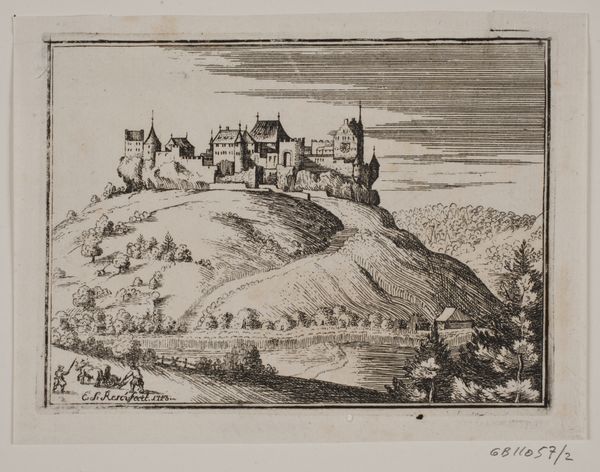
print, etching
#
baroque
# print
#
etching
#
landscape
#
etching
#
cityscape
#
history-painting
Dimensions: height 95 mm, width 167 mm
Copyright: Rijks Museum: Open Domain
Curator: This etching, "Gezicht op kasteel Gaillard in Lyon," was created in 1652 by Israel Silvestre, and is part of the Rijksmuseum collection. Editor: It's remarkable. The contrast between the detailed architecture and the wild, almost brutalist rendering of the rocks is so striking. I am also stuck with the sense of domination this castle emits to its landscape, creating hierarchy where is supposed to be nature. Curator: Yes, Silvestre was quite interested in capturing architecture within the social and political context of the landscape. Cityscapes at the time reflected not just topographical interests, but were embedded with displays of power, class, and social structures. These representations served to promote ideas of status, often erasing the less fortunate or powerless. Editor: So it's not just a picture of a pretty building. Considering what you mention, the lone figures at the bottom feel like visual afterthoughts or maybe visual testimonies about this building imposition on a community that remains unrepresented. The placement makes them subordinate. This reinforces an oppressive narrative, doesn't it? Curator: Absolutely. Furthermore, think about who was commissioning and consuming these images: royalty, the wealthy, and institutions looking to legitimize and disseminate their influence. This image, and other similar images circulated narratives around nationhood and expansionism. This could very much be seen as a representation and almost an ad of France's domination. Editor: That puts it in an even sharper light. The level of detail in the castle compared to the figures below highlights this social disparity too. What seems like a mere rendering choice then carries loaded significance. Even the material speaks to this—an etching allowed for relatively mass production, further disseminating this ideology. Curator: Exactly. And knowing this image resided within collections highlights its performative and political nature, shaping the historical imaginary of audiences exposed to such pieces. It's a powerful artifact reflecting the cultural history of power dynamics. Editor: It definitely shifted my understanding, taking it from a pleasant landscape to a critical commentary on social control and representation through architecture and printmaking. Thanks!
Comments
No comments
Be the first to comment and join the conversation on the ultimate creative platform.
